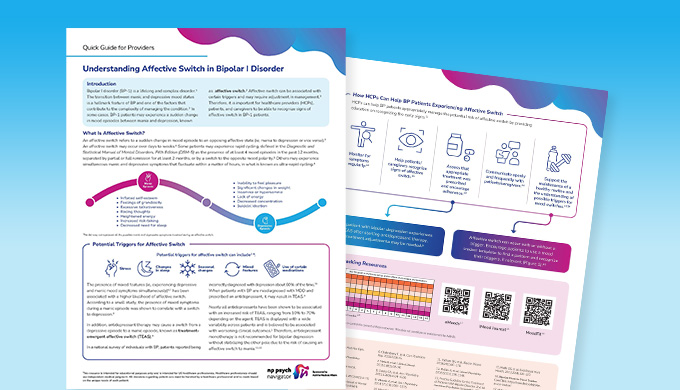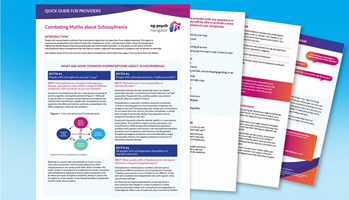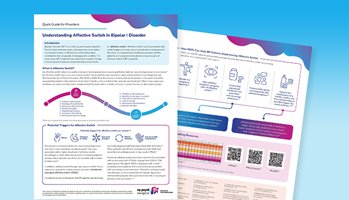
Quick Guide
Understanding Affective Switch in Bipolar I Disorder
Patients with bipolar I disorder (BP-1) may experience affective switch, which is a sudden transition in mood episodes between mania and depression. Affective switch can be triggered by certain medications as well as social or environmental factors. Learn how to recognize and monitor for signs of affective switch in patients with BP-1.
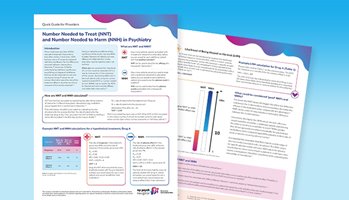
Quick Guide
Number Needed to Treat (NNT) and Number Needed to Harm (NNH) in Psychiatry
Number needed to treat (NNT) and number needed to harm (NNH) are metrics that can be used to evaluate the clinical relevance of findings from clinical trials. Together, NNT and NNH can be used to express the likelihood of being helped or harmed (LHH), which may be helpful for communicating and understanding the potential benefits and risks of a treatment. This quick guide will review the definitions, calculations, and interpretations of NNT, NNH, and LHH. For additional information, please visit our Clinical Insights section for a video featuring Dr Leslie Citrome on this topic.
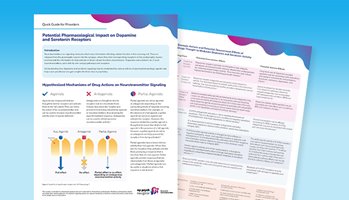
Quick Guide
Potential Pharmacological Impact on Dopamine and Serotonin Receptors
Dopamine and serotonin are known neurotransmitters in the brain. Learning the effects that these neurotransmitters may be associated with and how they can be modulated may help healthcare providers better understand their impact in psychiatry.
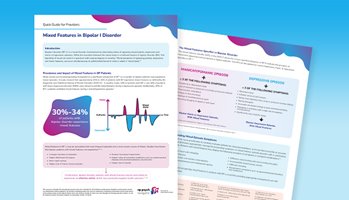
Quick Guide
Mixed Features in Bipolar I Disorder
Many patients with bipolar I disorder (BP-1) can experience mixed features, which is the simultaneous occurrence of depressive and manic symptoms. Mixed features can be associated with negative outcomes. Therefore, it is important for healthcare providers to evaluate BP-1 patients for the presence of mixed features to provide appropriate management strategies.
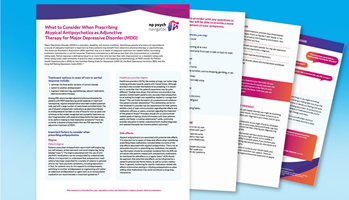
Quick Guide
What to Consider When Prescribing Antipsychotics
Major Depressive Disorder (MDD) is a prevalent, disabling, and chronic condition. Identifying patients who have not responded to a course of adequate treatment is important as these patients may benefit from adjunctive pharmacotherapy or psychotherapy.
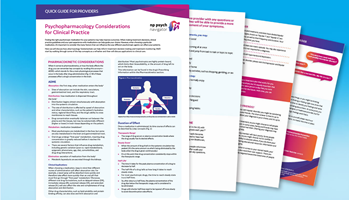
Quick Guide
Psychopharmacology Considerations for Clinical Practice
Finding the right psychotropic medication for your patients may help improve outcomes. When making treatment decisions, clinical practice guidelines and your past experience with medications can help guide your choice. However, when choosing a particular medication, it’s important to consider the many factors that can influence the way different psychotropic agents can affect your patients.
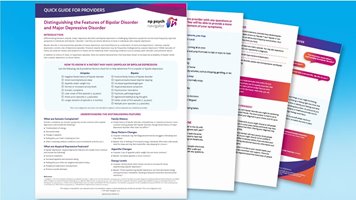
Quick Guide
Distinguishing the Features of Bipolar Disorder and Major Depressive Disorder
Differentiating between unipolar (major depressive disorder) and bipolar depression is challenging. Depressive symptoms are the most frequently reported symptoms in individuals with bipolar I disorder, and they are almost identical to those in individuals with unipolar depression. This printable 1-page guide is created to help you find the information you need quickly and easily.
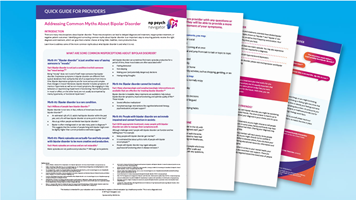
Quick Guide
Addressing Common Myths About Bipolar Disorder
There are many misconceptions about bipolar disorder. These misconceptions can lead to delayed diagnosis and treatment, inappropriate treatment, or negative patient outcomes. Identifying and correcting common myths about bipolar disorder is an important step to ensuring patients receive the right diagnosis and treatment, which can give them a better chance at living fuller, healthier, more productive lives. Learn how to address some of the more common myths about what bipolar disorder is and what it is not.


